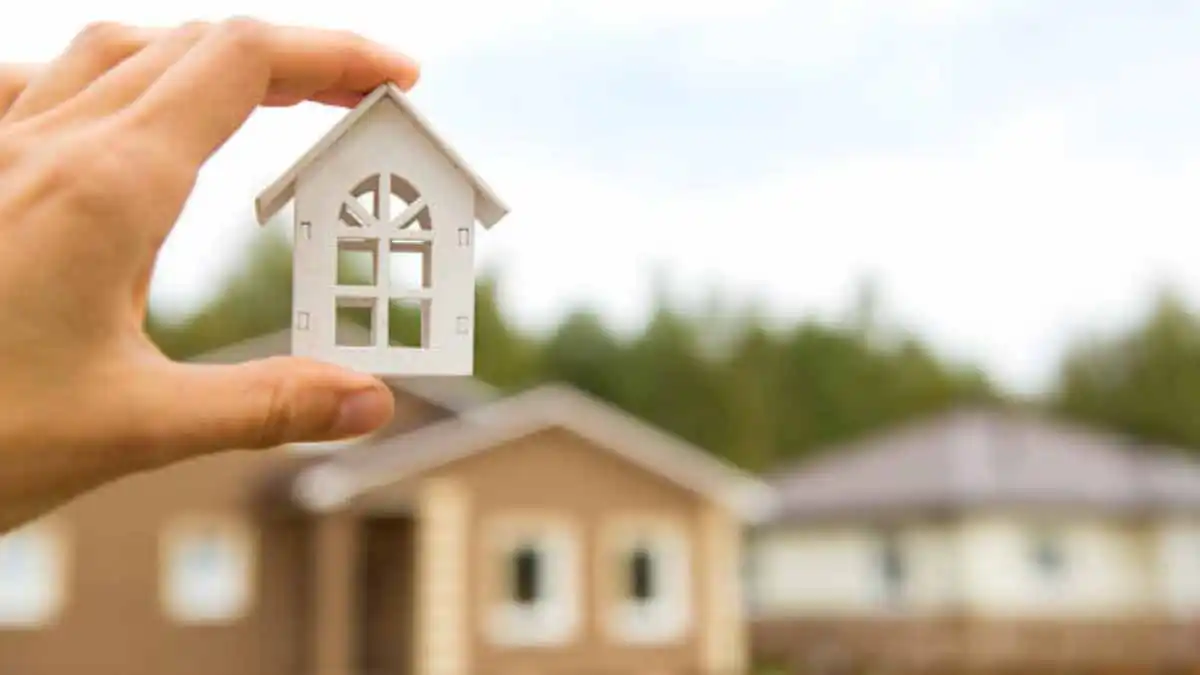HOME IMPROVEMENT
How to Choose the Perfect Neighborhood When Looking at Homes for Sale

When searching for a new home, finding the right neighborhood is just as important as finding the ideal house. A neighborhood shapes your lifestyle, influences property values, and affects long-term satisfaction with your purchase. As you navigate the homes for sale, focusing on neighborhood characteristics that align with your needs and priorities can ensure that your new location feels like home.
This guide covers essential considerations to help you choose a neighborhood that enhances your quality of life and complements your home investment.
Table of Contents
1. Determine Your Priorities
Every buyer has unique priorities, so it’s essential to identify your specific needs and lifestyle preferences when exploring neighborhoods. Start by listing the features you want most, as this will guide your search and help you narrow down your options.
Key Factors to Consider:
- Commute Time: Proximity to work can play a big role in your daily life. A short commute saves time and reduces stress, while living farther away may be a trade-off for lower prices or more space.
- Lifestyle Amenities: Consider the amenities you’d like nearby, such as parks, fitness centers, restaurants, and shopping. Access to these features can enhance convenience and your enjoyment of the area.
- School Quality: For families, the quality of local schools may be a top priority. Research school ratings and performance in the area to ensure your chosen neighborhood aligns with your educational needs.
With a clear list of priorities, you can focus on neighborhoods that match your lifestyle and make the process of finding homes for sale easier.
2. Assess Neighborhood Safety
Safety is an essential factor for most homebuyers, as it affects both personal comfort and property value. A safe neighborhood creates peace of mind and adds long-term value to your investment.
Steps to Evaluate Safety:
- Research Crime Rates: Many websites offer information on crime statistics for specific areas. Reviewing these statistics can provide insight into the general safety and trends in the neighborhood.
- Visit the Neighborhood at Different Times: Observing the area at various times of day can give you a realistic sense of activity levels, lighting, and safety. A neighborhood that feels calm in the afternoon may feel very different at night.
- Talk to Locals: Speaking with residents or local real estate agents can provide additional insight into the neighborhood’s safety and any specific concerns they may have.
Choosing a neighborhood where you feel secure ensures that your new home will provide comfort as well as convenience.
3. Explore Local Amenities and Services
Having easy access to essential services and recreational amenities can make a neighborhood more desirable. Amenities like grocery stores, healthcare providers, and public transportation hubs add convenience to daily life and make it easier to enjoy your new community.
Key Amenities to Look For:
- Shopping and Dining: Determine if the area has convenient access to grocery stores, restaurants, and retail options. An area with diverse dining and shopping choices offers flexibility and enjoyment.
- Healthcare Facilities: Proximity to hospitals and clinics can be important, especially for families or individuals with specific healthcare needs.
- Public Transportation: If you rely on public transit, ensure that the neighborhood has access to bus or train routes. Public transit access can also enhance property value, as it appeals to a wide range of buyers.
For guidance on amenities, a local real estate agent like those at Hart of Texas Realty can provide valuable insights about specific neighborhoods, helping you find areas with the features you want most.

4. Check Property Values and Market Trends
The financial health of a neighborhood is often reflected in its property values and real estate market trends. Evaluating the market can help you determine whether the area is a good long-term investment and whether it aligns with your budget.
Market Factors to Consider:
- Median Home Prices: Reviewing the median home prices in a neighborhood gives you an idea of whether the area is within your budget and comparable to surrounding communities.
- Value Appreciation: Look for neighborhoods where property values have increased over time. A stable or appreciating market is a positive sign, as it indicates demand and future investment potential.
- Days on Market: The average time homes spend on the market provides insight into demand. If homes sell quickly, the neighborhood may be highly desirable, while areas with longer listings might offer more negotiation opportunities.
Understanding the real estate market allows you to make a well-informed decision, balancing your budget with potential return on investment.
5. Evaluate the Neighborhood’s Long-Term Potential
Neighborhoods evolve over time, and finding one with growth potential ensures that your investment appreciates. Look for signs of development and community improvements that suggest the area will continue to grow in appeal and value.
Indicators of Growth Potential:
- New Construction Projects: New residential or commercial developments indicate that the area is expanding and becoming more attractive. These projects can also introduce additional amenities and services.
- Local Government Investments: Cities investing in infrastructure, such as improved roads, parks, and public facilities, tend to attract new residents and businesses, boosting property values.
- Proximity to Employment Hubs: Areas near expanding business centers or tech hubs often experience increased demand as employees seek convenient living arrangements.
Neighborhoods with strong growth indicators are likely to appreciate, making them a smart choice for buyers who want a solid long-term investment.
6. Consider the Community Vibe and Lifestyle
Finding a neighborhood with a community atmosphere that aligns with your lifestyle is essential. Some neighborhoods have a bustling, urban feel, while others are quieter and more residential. Exploring the area’s character helps ensure a good fit for your daily life.
Ways to Gauge Community Vibe:
- Visit Local Parks and Cafes: Spending time at local parks, cafes, and other communal areas provides a sense of the community’s pace and friendliness. Notice whether residents interact with each other and what types of activities are popular.
- Look for Community Events: Check online or local bulletin boards for events such as farmers’ markets, festivals, or other gatherings. Active communities often organize events that bring residents together.
- Observe the Area’s Demographics: Some neighborhoods may attract families, young professionals, or retirees. Choose an area where the demographics and community activities match your lifestyle.
Choosing a neighborhood with a compatible vibe ensures that you’ll enjoy spending time in the area and feel connected to the community.
7. Consider Proximity to Schools and Education Options
If you have children or plan to in the future, researching local schools and educational options is critical. The quality of schools affects both your family’s experience and the long-term value of your property, as many buyers prioritize areas with strong school systems.
Important School Factors:
- School Ratings and Reviews: Look for schools with strong academic performance and positive reviews. Public data on school ratings can provide insight into the area’s educational offerings.
- Distance from Home: Determine how close schools are to the neighborhood and whether they offer transportation options. Shorter distances and convenient access can make daily routines easier.
- Extracurricular Opportunities: Consider the range of extracurricular activities offered, as these enhance the educational experience and promote well-rounded development.
Finding a neighborhood with access to quality education can enhance both your lifestyle and the appeal of your home to future buyers.
8. Use a Local Real Estate Agent for Expert Guidance
Navigating a new area can be challenging, and working with a local real estate agent can provide invaluable insights into different neighborhoods. An agent familiar with the region can help you understand each area’s unique qualities, market trends, and amenities.
Benefits of a Local Real Estate Agent:
- Neighborhood Knowledge: Local agents are experts in the areas they serve. They can provide detailed information about neighborhood safety, amenities, and other key factors.
- Access to Listings: Real estate agents often have access to listings before they hit the public market, giving you a head start in competitive neighborhoods.
- Guidance on Market Value: Experienced agents help you assess market value accurately, ensuring you make a smart investment.
If you’re interested in exploring specific areas, a real estate agency like Hart of Texas Realty can provide the local expertise and resources needed to find a neighborhood that aligns with your preferences and goals.
Conclusion: Finding the Right Neighborhood for Your New Home
Choosing the right neighborhood is essential to finding a home that meets your lifestyle, budget, and long-term goals. By evaluating factors like safety, amenities, market trends, and community vibe, you can identify neighborhoods that offer the best balance of convenience, value, and quality of life.
Working with a knowledgeable real estate agent, such as the team at Hart of Texas Realty, provides additional guidance and local insight, ensuring you make a well-informed decision. With the right approach, you can find a neighborhood that feels like home, creating a foundation for years of satisfaction and growth.
-

 GENERAL2 months ago
GENERAL2 months agoUncovering the World of кинокрадко: The Dark Side of Film Piracy
-

 GENERAL2 weeks ago
GENERAL2 weeks agoUnveiling the Art of преводсч: How Translators Bridge Language Barriers
-

 YOGA1 year ago
YOGA1 year ago4 Person Yoga Poses for Beginners
-

 GENERAL2 months ago
GENERAL2 months agoThe Journey of iamnobody89757: From Anonymous User to Internet Sensation


























